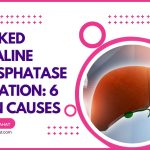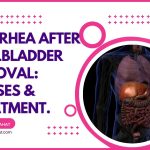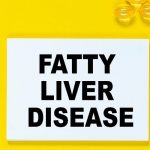What Level of Alkaline Phosphatase is dangerous? 5 Facts
Our content is not intended nor recommended as a substitute for medical advice by your doctor. Use for informational purposes only.
1. What are the normal reference ranges by age?
Before we dive into the different levels of high alkaline phosphatase, you should know some basic facts about the normal reference ranges.
Alkaline phosphatase levels vary significantly with age, gender, and during pregnancy.
During infancy and childhood, alkaline phosphatase is significantly higher (normal upper limits are over 400 and 500 U/L, especially between one month and 12 years old).
These alkaline phosphatase levels are not considered dangerous and are completely normal, although it is 3 or 4 times the upper limit of normal alkaline phosphatase in adults.
The table below illustrates the normal reference ranges of alkaline phosphatase according to the famous U.S. Lab (labcorp®.)
Age | Male (IU/L) | Female (IU/L) |
| 0 to 5 d | 47−127 | 47−127 |
| 6 to 10 d | 29−242 | 29−242 |
| 11 to 20 d | 109−357 | 109−357 |
| 21 to 30 d | 94–494 | 94–494 |
| 1 to 2 m | 149−539 | 149−539 |
| 3 to 6 m | 131−452 | 131−452 |
| 7 to 11 m | 117−401 | 117−401 |
| 12 m to 6 y | 158−369 | 158−369 |
| 7 to 12 y | 150−409 | 150−409 |
| 13 y | 156−435 | 78−227 |
| 14 y | 114−375 | 64−161 |
| 15 y | 88−279 | 56−134 |
| 16 y | 74−207 | 51−121 |
| 17 y | 63−161 | 47−113 |
| 18 to 20 y | 51−125 | 42−106 |
| >20 y | 44−121 | 44−121 |
Also, the chart below shows the upper limits of normal alkaline phosphatase levels according to age and gender.
Note the vertical black dotted line; It represents the upper limit of normal alkaline phosphatase in adults above 20.
2. Is every alkaline phosphatase elevation dangerous?
Alkaline phosphatase is one of the unique enzymes in your body. It is unique because diseases do not always cause elevations.
Many physiological conditions and benign genetic conditions may lead to significant rises in the enzymes without being dangerous.
Examples of benign causes of elevated alkaline phosphatase:
- Pregnancy (third trimester).
- During bone growth (childhood and adolescence).
- Healing of bone fractures.
- Bening hyperphosphatemia of infancy and childhood.
- Aging.
- People with blood groups (O) and (B) experience an increase in their ALP after eating.
- Transient hyperphosphatemia of infancy and early childhood.
- Diabetes mellitus.
- Benign postoperative cholestasis.
So, there are no absolute levels above which we consider the elevation of alkaline phosphatase dangerous.
A dangerous elevation in alkaline phosphatase is not an absolute number; many other factors should be considered:
- The presence or absence of physiological/benign causes of alkaline phosphatase elevations (such as pregnancy, bone growth, etc.).
- The presence of symptoms of biliary obstruction (such as jaundice, clay stool, dark urine, etc.).
- The presence of cancer symptoms and signs (such as liver pain, breast mass, etc.).
- The presence of symptoms/signs of liver affections.
- The presence of signs of infection or sepsis.
- Other laboratory derangements include the degree of liver enzymes, bilirubin elevations, etc.
So, we don’t take the level of alkaline phosphatase elevation in isolation. Instead, we often combine the levels with the symptoms, signs, other laboratory arrangements, and others to assess the danger level of elevation in alkaline phosphatase.
3. Benign (non-dangerous) causes elevated alkaline phosphatase.
In this section, you will learn about all the possible non-serious (benign) causes of elevations of alkaline phosphatase.
This will help you understand when and not to worry about alkaline phosphatase levels.
Common benign (non-dangerous) causes of elevated alkaline phosphatase include:
- Pregnancy (third trimester).
- Bone growth (during childhood and teenage).
- Healing bone fractures.
A. Pregnancy (third trimester).
During the late months of pregnancy (third trimester), alkaline phosphatase often rises above the reference ranges.
The reference range of alkaline phosphatase in adult non-pregnant females is between 44 and 121 U/L. In the third trimester (last three months of pregnancy), levels up to twice the upper limit of normal (up to 242 U/L) are considered normal (reference).
Moreover, there are reports of extreme elevation of alkaline phosphatase (above 1000) during the third trimester.
No need to worry if your alkaline phosphatase levels are up to twice the upper limit of normal (242 U/L) in the third trimester.
However, some cases should be investigated for elevated alkaline phosphatase, such as:
- Elevation of alkaline phosphatase in the first two trimesters.
- Elevation of alkaline phosphatase above the two upper normal limits (above 242 U/L) in the third trimester.
- Presence of itching (Intrahepatic cholestasis of pregnancy should be excluded).
- Presence of signs of biliary disease (typical biliary colic in the form of severe right upper quadrant pain with nausea or vomiting).
- Dark urine or clay stools.
- Presence of signs of liver affection such as jaundice and upper right quadrant pain.
B. Bone growth (children, teenagers).
Bone growth is one of the common non-serious causes of elevated alkaline phosphatase.
Periods of highest growth (often between one month and 14 years old) are associated with higher alkaline phosphatase levels (refer to the above reference ranges in the table and chart).
C. Healing bone fractures.
Bone fractures (particularly multiple and complex fractures) are one of the being causes of elevated alkaline phosphatase.
The alkaline phosphatase elevations correlate with the rate of healing of the bone (reference):
- Minor increases in alkaline phosphatase in the first two weeks after the fracture indicate good fixation and healing.
- Major increases in alkaline phosphatase in the first two weeks indicate inadequate fracture fixation and delayed healing.
D. People with Blood groups B & O (after eating fatty foods).
People with blood groups B and O may have elevations of alkaline phosphatase after eating (reference). This phenomenon is very obvious after eating high-fat foods.
The elevations are due to the inability of the blood cells to bind to the alkaline phosphatase driver from the small intestine resulting in its elevations.
The condition is often benign (not dangerous), and the elevations are minor.
E. Transient hyperphosphatasemia of infancy and early childhood.
About 2-3% of infants and children younger than five may have transient serum alkaline phosphatase elevations (often above 1000).
The most common ages affected are those between 6 months and two years old (reference).
The elevations in alkaline phosphatase are not associated with any symptoms or signs of liver or biliary affection.
The condition is not dangerous, and the elevated levels of ALP often return to normal values within weeks or a few months (reference).
F. Benign postoperative cholestasis.
If you have a major operation (especially after intra-abdominal and cardiac surgery), you may have a transient elevation of alkaline phosphatase.
This phenomenon is due to temporary intrahepatic bile stasis. The exact mechanism is unknown, and the condition is often self-limiting. However, your doctor should exclude other causes of biliary obstruction, liver diseases, medications, etc.
G. Diabetes mellitus.
Patients with diabetes mellitus may have elevated levels of serum alkaline phosphatase. The exact cause is unknown, but some studies suggest that the elevation is due to the effect of diabetes on the bone (the diabetic bone disease).
4. Dangerous causes of alkaline phosphatase elevation.
Dangerous causes of elevated alkaline phosphatase can be classified as:
- Obstruction of biliary ducts (extrahepatic cholestasis).
- Liver diseases cause bile stasis inside the liver (intrahepatic cholestasis).
- Bone diseases.
- Cancer.
- Others (as peritonitis, thyroid diseases, gastric ulcers, etc.).
A. Obstruction of biliary ducts (mainly the common bile duct).
Obstruction of the bile outflow to the duodenum is one of the most common causes of elevated alkaline phosphatase. It often leads to marked and dangerous alkaline phosphatase levels (More than four times the upper limit of normal).
It also leads to elevations in the bilirubin levels (mainly the conjugated type) and jaundice.
The causes of biliary obstruction that leads to elevated alkaline phosphatase are in the table below (reference).
Causes of Biliary obstruction (Extrahepatic). |
| 1. Gallstones in the bile duct (most common): – Uncomplicated – Complicated (biliary pancreatitis, acute cholangitis) |
| 2. Malignant obstruction: – Pancreas cancer – Gallbladder cancer – Ampulla of Vater cancer – Bile duct cancer – Metastasis to perihilar lymph nodes |
| 3. Biliary strictures (narrowing): – Primary sclerosing cholangitis with extrahepatic bile duct stricture – Complications after invasive procedures – Chronic pancreatitis with a stricture of the distal bile duct – Biliary anastomotic stricture following liver transplantation |
| 4. Infections: – AIDS cholangiopathy – Ascaris lumbricoides – Liver flukes |
Symptoms:
In cases of biliary obstruction, the elevation of alkaline phosphatase may reach dangerous and markedly elevated levels.
However, the elevation in alkaline phosphatase is often associated with symptoms, other laboratory arrangements, and evidence of biliary obstruction by imaging.
Symptoms include:
- Biliary colic: sudden severe right upper abdominal pain; the pain often radiates to the epigastric area, the right back, and the right shoulder.
- Jaundice.
- Clay-colored stool.
- Dark (tea-colored) urine.
- Nausea, anorexia.
- Sometimes, vomiting.
- In cases of malignant obstruction, chronic abdominal pain and progressive weight loss are present.
Diagnosis:
Diagnosing biliary obstruction as a cause of elevated alkaline phosphatase is often easy.
It depends on:
- There are symptoms and signs of biliary obstruction such as jaundice and biliary colic.
- Elevated alkaline phosphatase (often more than four times the upper limit of normal).
- Elevated bilirubin levels, and sometimes, elevated liver enzymes.
- Evidence of biliary obstruction in abdominal imaging (ultrasound, C.T., MRI, or MRCP).
B. Liver diseases (intrahepatic cholestasis).
Causes of serious liver disease that may lead to elevated alkaline phosphatase levels include:
- Drugs and toxins that lead to cholestasis, such as phenytoin.
- Primary biliary cirrhosis.
- Primary sclerosing cholangitis.
- Intrahepatic cholestasis of pregnancy.
- Total parenteral nutrition.
- Liver infiltration with amyloidosis, Lymphoma, T.B., and sarcoidosis.
- Liver abscess.
- Metastatic cancers of the liver.
- Liver transplantation (graft rejection).
- Alcoholic hepatitis.
- Sickle cell disease (liver crisis).
- Hepatitis (such as viral and autoimmune hepatitis).
- Liver cirrhosis.
- Decreased blood supply to the liver (ischemic hepatitis).
These causes may lead to dangerous levels of alkaline phosphatase. The symptoms vary according to the cause. Most patients may have jaundice, itching, liver pain, and others.
C. Bone diseases.
The bone diseases causing continuous bone destruction (turnover) often lead to elevated alkaline phosphatase.
The elevation in alkaline phosphatase is often mild to moderate (less than four times the upper limit of normal).
However, some of these diseases are dangerous and can lead to serious health problems.
Common causes:
- Osteomalacia (low vitamin D).
- Paget’s disease of bone.
- Bone cancer (osteogenic sarcoma and bone metastases).
- Hyperparathyroidism.
- Hyperthyroidism.
- Diabetes mellitus (diabetic bone disease).
Patients with high bone turnover often have diffuse bone pain and maybe pathological (easy) fractures.
D. Cancer.
Alkaline phosphatase is one of the tumor markers. However, it is not specific, and its elevation doesn’t always mean cancer.
Also, the degree of elevation doesn’t often correlate with the type or the severity of cancer.
No specific levels of alkaline phosphatase mean cancer. However, before searching for cancer, your doctor must exclude other causes of elevated ALP.
Common cancers that are associated with high alkaline phosphatase include:
- Lymphoma.
- Osteosarcoma (bone cancer).
- Lung cancer.
- Gastric cancer.
- Head and neck cancers.
- Ovarian and uterine cancers.
- Renal cancer.
- Bone and liver metastatic cancers.
- Myeloid metaplasia (a pre-cancerous condition).
E. Other serious causes of elevated alkaline phosphatase:
- Peritonitis (inflammation of the peritoneal membrane surrounding the abdominal organs).
- Gastric ulcers.
- Thyroid disease (hyperparathyroidism and subacute thyroiditis).
5. Conclusion: when to consider elevated alkaline phosphatase dangerous?
Not every elevation of alkaline phosphatase is dangerous. However, some benign conditions may cause extreme elevations of the enzymes (such as transient hyperphosphatemia in infancy and childhood).
So, the elevation level poorly correlates with your health condition’s seriousness.
Generally, your doctor considers the elevated levels of alkaline phosphatase dangerous when:
- The absence of benign and physiological conditions leads to elevated ALP (such as pregnancy, infancy, early childhood, etc.).
- Presence of symptoms or signs of biliary obstruction (such as biliary colics, jaundice, clay stools, dark urine, etc.).
- Presence of signs or symptoms of liver disease such as liver pain, jaundice, itching, swollen limbs, etc.).
- Presence of signs or symptoms of cancer such as chronic abdominal pain, weight loss, breast mass, enlarged lymph nodes, etc.
- Presence of signs and symptoms of bone disease such as bone pain, pathological fractures, etc.
- Derangements of other laboratory investigations (other than ALP) such as bilirubin, liver enzymes, thyroid hormones, etc.).
- Evidence-based
- Written by a doctor.






